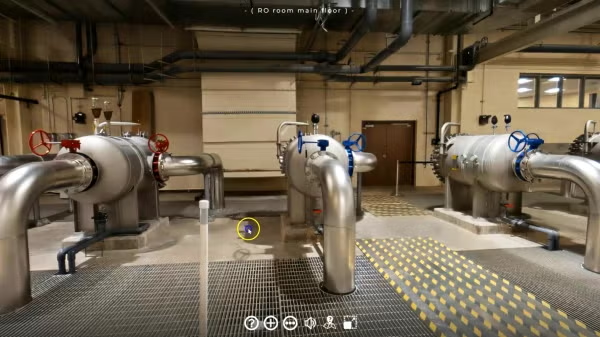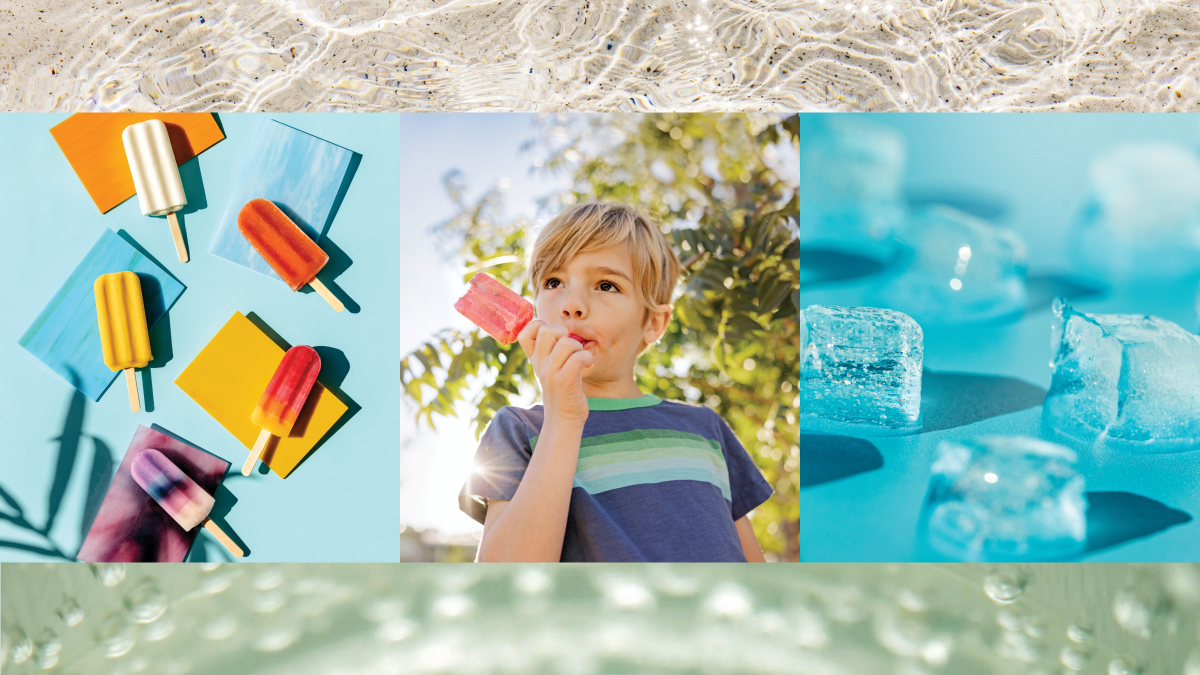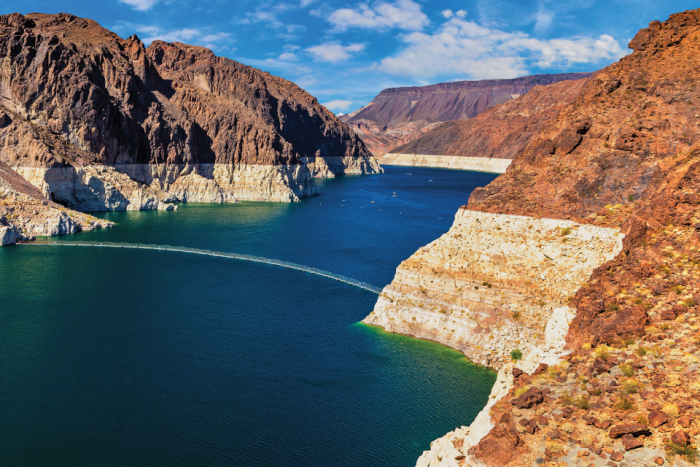Written by Christy Spackman, an ASU assistant professor and senior global futures scientist. This essay is adapted with permission from an article in Issues in Science and Technology from her book, “The Taste of Water: Sensory Perception and the Making of an Industrialized Beverage.”
Editor's note: This story was featured in the winter 2025 issue of ASU Thrive.
Would you drink recycled water you knew was made from your own poop or pee? What if that water showed up in a glass of award-winning beer or even popsicles?
For attendees of Scottsdale, Arizona’s annual Canal Convergence arts festival, the One Water Brewing Showcase offered an opportunity to try limited-edition craft beers made from highly purified wastewater. With each sip, drinkers found themselves tasting a speculative future not yet legally possible in Arizona — one where wastewater is immediately cleaned and returned to the municipal water supply system. Participating brewers donned their “water hero” capes, helping the municipal water utility’s efforts to get the public to accept purified recycled water.
If you’ve been paying attention to the news about the dwindling Colorado River or seen the bathtub ring in Lake Powell demarking the reservoir’s peak years, you’re well aware that Arizona needs “water heroes.”
Since the 1980s, Arizona’s water managers have proposed and deployed a range of techniques to mitigate dwindling water supplies. Some are fantastical, like a contested proposal to geoengineer the atmosphere. Other techniques seem more practical, including the desalinization of brackish groundwater, improving current water use and efforts to innovate in water augmentation with technology such as cloud seeding. Though all these water futures rely on technological intervention, reuse is the one that involves people’s intimate, embodied experiences of smelling, tasting and consuming water.
This question of water quantity and quality hits close to home for me, as an inhabitant of Maricopa County, Arizona — one of the fastest-growing metropolitan regions in the U.S. My hometown has an average rainfall of only 8 inches per year. (Washington, D.C., by comparison, receives more than 40 inches per year.)
Meeting the water needs of the region’s 4.95 million inhabitants is a struggle. Regulators, policymakers and others responsible for supplying water to water-stressed regions are constantly searching for “new” sources of water. Water recycling, also known as reuse, sits at the heart of these possible water futures.
Treat, treat and treat again
Water reuse offers providers a pathway for transforming water, no matter its source, into whatever type of water is needed. Many people who live in water-scarce regions practice informal forms of reuse, such as using water from rinsing vegetables to water house plants. Using water that contains discards is not new.
At the municipal scale, reuse falls into two categories: indirect and direct. In indirect reuse, wastewater treatment facilities return treated water to aquifers or other natural buffers. Indirect reuse has proved a politically palatable approach for introducing reuse to communities.
Proven technology to clean water
Direct potable reuse, or advanced water purification, isn’t a vision from a sci-fi infused future: It’s already happening today — just not yet in Arizona. Plants are operating in California and Nevada.
“The technology is very well-established,” says Sarah Porter, director of the Kyl Center for Water Policy at ASU’s Morrison Institute for Public Policy.
Advanced water purification is simply a matter of upgrading reclaimed water to the higher drinking-water standard. Scottsdale already has a pilot plant doing just that; Pima County conducted a similar test run a few years ago.
Clark County, Nevada’s Water Reclamation District deposits millions of gallons of AWP H2O into Lake Mead, some of which finds its way to Phoenix.
— Paul Tullis, who writes on environmental issues for Bloomberg, The New York Times and others
For example, due to a 1989 Scottsdale mandate that golf courses use reclaimed water, courses partnered with the city to fund the building of an advanced wastewater treatment plant. Now all courses in Scottsdale are watered with reclaimed water. The city then uses any excess water left over by the golf courses to recharge its aquifers — a move that the city points to as helping it reach “safe yield” levels, the rate at which groundwater can be withdrawn without affecting long-term water levels.
In contrast, direct potable reuse sends the treated wastewater directly back into the water delivery system. It does this either by putting the treated wastewater into raw water headed for a drinking-water treatment plant, or by blending the treated wastewater with finished water ready for distribution.
For technologically minded folks who think of water in terms of its molecules, it’s not a big leap to go from purifying wastewater enough for safely watering golf courses or recharging aquifers to purifying wastewater to the point that it is considered safe for human consumption. The transformation of wastewater back into drinking water relies on a combination of advanced treatment techniques grounded in the philosophy of, as Scottsdale Water representatives explain it, “treat, treat and treat again.”
A growing number of cities in states including Colorado, Texas, California and Arizona, are actively exploring a future with the technology. Advocates for direct potable reuse are still working out how to help the technology diffuse into legal and social realms using approaches such as development of master plans, early efforts to seek stakeholder input, public-facing education and outreach, and demonstration treatment systems.
One of the main hurdles to this is what researchers call the yuck factor. As demonstrated by the range of fermented-food lovers and active communities of dumpster divers, yuck is not only innate — it’s also learned, and can potentially be unlearned.
Brewing support for wastewater reuse
By partnering with brewers to produce tasty beverages, proponents of water from direct potable reuse aim to create new, positive associations for consumers. Organizers of tastings seek to sever the affective connections between past experiences and expectations around wastewater so that reused water can finally transition out of its liminal state.
Scottsdale’s One Water Brewing Showcase in 2019 was the first competition to be widely open to the public — previous beer brewing competitions had remained accessible only to people associated with municipal water production.
Scottsdale Water’s public-facing approach is catching on: More recently, in collaboration with filtration membrane manufacturer Xylem, beers brewed from recycled water have appeared in Berlin in 2019, and Calgary in 2020. Good beer, especially good beer made from what was recently wastewater, makes for good press.
A radical reorganization
Efforts to activate the yum factor, playful as they may be, are political acts embedded within larger processes of decision-making. By engaging inhabitants, policymakers and members of the press in using their bodies to “taste” the future, proponents of direct potable reuse are asking different publics to actively support legislative, regulatory and infrastructural changes to the status quo.
As participants taste beer or popsicles made with recycled water, they accept a physiological invitation to rewrite the connections between taste and memory, to erase past concerns not just about the quality of a single glass of water, but also about the capacity of technologies, regulators, experts and governments to provide all people with access to safe and good water.
Want to learn more?
Visit sfis.asu.edu or read the original at issues.org/industrial-terroir-yuck-factor.
More Environment and sustainability

2 ASU faculty elected as AAAS Fellows
Two outstanding Arizona State University faculty spanning the physical sciences, psychological sciences and science policy have been named Fellows of the American Association for the Advancement of…

Homes for songbirds: Protecting Lucy’s warblers in the urban desert
Each spring, tiny Lucy’s warblers, with their soft gray plumage and rusty crown, return to the Arizona desert, flitting through the mesquite branches in search of safe places to nest.But as urban…

Public education project brings new water recycling process to life
A new virtual reality project developed by an interdisciplinary team at Arizona State University has earned the 2025 WateReuse Award for Excellence in Outreach and Education. The national …





